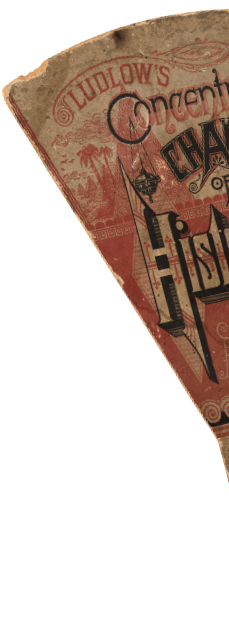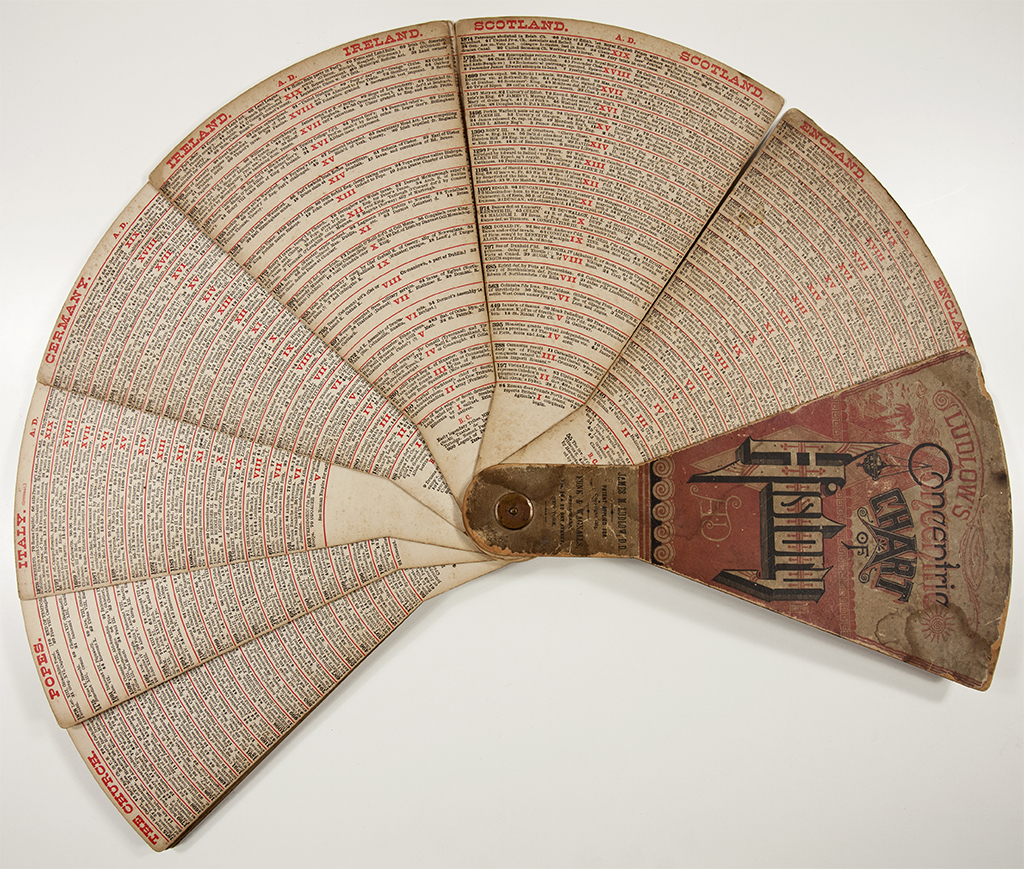
Concentric Chart of History
Ludlow’s Concentric Chart of History.
Giving at a glance the Separate and Contemporaneous History of each Century. Invented and compiled by J. M. Ludlow, D.D.
Introduction
N. Y. TRIBUNE: “Contains an enormous mass of information, readily accessible.”
ROSWELL D. HITCHCOCK, D.D., LL.D.: “A marvel of ingenuity and condensation; exceedingly useful.”
R. S. STORRS, D.D.: “Will be readily and pleasantly helpful to historical students.”
JESSE B. THOMAS, D.D., Brooklyn: “Gives a ‘bird’s eye view’ of history in the truest sense.”
A. McLEAN, Ed. Brooklyn Eagle: “Brings before the eye the chief events of the past, in their international and synchronous relations.”
The art of history flourished in Europe and the United States during the nineteenth century. History became a standard part of general education, and historical novels were all the rage. Knowing history mattered.
While many scholars wrote digests and study guides to help students along, others designed physical devices to make studying history easier. Among these, Ludlow’s Concentric Chart of History published by the New York Presbyterian pastor James Meeker Ludlow in 1885 is one of the most elegant.
Here was the problem. Books of history can be very dense with information. There is really no limit to the length of a book. But bringing together information from different parts of a book can be complex and taxing. Charts of history, by contrast, put historical information from different places and eras into a single visual field, but considerations of space and legibility severely limit the amount of information they can convey.
Today, we solve the problem of information depth through electronic interfaces. Click on a link, highlight a column, check a box, and you see all the information you need and nothing more. Before electronic display technologies, nineteenth-century inventors suggested numerous physical solutions to this fundamental data visualization problem.
James M. Ludlow’s solution was novel. He divided his historical chart into a large deck of triangular cards, each representing a nation or subject to be selected individually according to the interests of the user. Ludlow laid out the historical information on these cards in concentric bands representing centuries, with the most distant century closest to the point of the triangle. The deck was held together by a brass pin at the narrow end, so selected cards could be fanned out and placed next to one another.
The format of Ludlow’s device guaranteed that when the user placed one card next to another, centuries automatically lined up. If England and France were selected, the user would easily and without any additional effort see what was taking place contemporaneously in the two nations. On one side of the deck were years B. C., and on the other, A. D.
Ludlow did not go light on information. Though he left three card faces blank so users could make notes—and he also published an entirely blank deck for general note taking purposes—he mostly tried to fit as much information onto the cards as possible, and it is debatable whether or not the chart is too dense with text to best fulfill its purpose.
Regardless, Ludlow’s Concentric Chart of History is pleasure to hold and to use. Aesthetically, it brings together sumptuous print with the machine precision of the brass screw. The Chart looks and feels like a Spanish fan, and, like any well-designed interface, it is quick to use, but still makes you want to linger. It is useful to juxtapose nations whose histories are tightly bound together. But it is also absorbing to make new, less obvious alignments, to search for unrealized connections and synchronicities across the space of the world.
Physical copies of Ludlow’s Concentric Chart of History are now hard to find. In this digital version, we have tried to preserve the look and to convey the feel of the original. Just as in real life, pick the cards you want to use and fan them out. Flip the deck to switch from dates A. D. to dates B. C. Examine cards individually up close or at a distance. Compare up to three cards at a time. Read, play, memorize!

